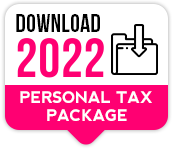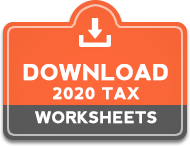
New rules for reporting bare trusts will spare a lot of families – why didn’t the government go this route to begin with?
August 21, 2024
The maximum CPP pension future retirees could get is about to start changing in a big way
September 1, 2024How to Qualify for a Mortgage in 2024
Buying a home or condo is exciting, but it can also be overwhelming. There are tons of things to think about and decisions to make, especially when it comes to your finances. If you’re ready to take the homeownership leap, odds are you’re shopping for a mortgage. And you probably also have a lot of questions.
Read on for answers to six of the most common mortgage questions in Canada and to better understand how the current rules and regulations may affect your purchasing power.
How Much Mortgage Do I Qualify For?
Figuring out how much of a mortgage you qualify for is the first important step to home ownership. It doesn’t make sense to start home-hunting without knowing your budget, because then you might fall in love with something you can’t afford.
Calculating your maximum affordability involves many steps, but income, expenses, and debt all factor in. Debt includes school loans, car payments, and credit card balances, while expenses range from current rent to cell phone bills.
Mortgage lenders will look at debt service ratios, which calculate the portion of your income you would pay toward the combination of a mortgage payment, property taxes, heating costs, and half of your annual condo fees if you’re considering a condo.
Of course, the current bank rate also factors in. The best way to understand how much you qualify for is to use one of the many free online tools or speak with a mortgage professional.
Related: Everything You Need to Know About Halal Mortgages
What Are the New Mortgage Rules in Canada 2024?
As of August 1, 2024, the Canadian government has changed the mortgage rules so that first-time home buyers purchasing a newly constructed home can secure up to a 30-year amortization. (Previously, they could only secure a 25-year amortization, a.k.a. the number of years it would take to pay off the total amount owing.) Adding that extra five years means buyers will have more time to pay down their mortgage, lowering their overpayment installments for their agreed-upon term.
What Is the Stress Test for 2024 in Canada?
When the federal government announced its budget earlier this year, it confirmed the stress test will remain the same in Canada for 2024. The stress test, which plans for the worst-case scenarios (like sky-rocketing rates or losing your job), determines how much you could afford under those circumstances.
The Canadian mortgage stress test began in 2018 and applies to all Canadian homebuyers applying for a mortgage. It requires that banks and lenders double-check that borrowers can still make their payments at a higher rate than they qualify for to avoid a foreclosure scenario if things go wrong.
How Much Mortgage Can I Get With $70,000 Salary in Canada?
The average annual income in Canada is estimated to be between $60,000 and $70,000. If you make the high end of that, you could qualify for roughly $300,000. However, there are many other factors to consider before knowing your maximum affordability, so it’s best to speak with a mortgage professional for a more personalized answer.
What Income Do You Need for a $500,000 Mortgage in Canada?
If you’re looking to secure a $500,000 mortgage, it’s estimated you’ll need to make at least close to $140,000 a year. That can be a solo or a joint salary. But once again, there are so many other factors to consider, including your monthly expenses, interest rates, debts, down payment, and more. Speak to a mortgage professional for a more personalized quote.
How Much Down Payment Do I Need for a Mortgage?
In Canada, the purchase price of a home determines how much of a down payment you need. The first $500,000 requires a down payment of at least five per cent. Anything above that requires a 10 per cent down payment.
If you purchase a home that costs $1 million or more, you will need to put down 20 per cent of the purchase price. However, if you want to secure a low-ratio mortgage, you’ll need to put down 20 per cent in all scenarios. That’s to avoid paying mortgage insurance, which is required for most cases where the down payment is less than 20 per cent.
Those rules change if you have poor credit or if you’re self-employed, as lenders may require you to put down even more. The good news is that the more you’re able to save and put towards your future home, the less overall debt you’ll have!
Post Link: (https://www.hgtv.ca/how-to-qualify-mortgage-2024/)







